Facts about the two museums
Norway: The Art Industry Museum (Kunstindustrimuseet) was founded in 1876. It was one of the oldest museums in Norway and among Europe’s oldest art industry museums. In 1904, the museum moved into the building in St Olavs gate, designed by Bredo Greve (1871–1931) and Ingvar Magnus Olsen Hjorth (1862–1927). In 2003, the museum became part of the National Museum of Art, Architecture and Design. The museum closed in autumn 2016. The objects from the museum can be seen again in the new Nasjonalmuseet, which is opened in 2022.
Source: Nasjomalmuseet
Denmark: The Art Industry Museum ( Det Danske Kunstindustrimuseum) was established in 1890. In 1894, Vilhelm Klein’s building was inaugurated next to the Industrial Association on Rådhuspladsen in Copenhagen, and the following year it was open to the public. In 1926, the museum moved to the current buildings, the Royal Frederiks Hospital in Bredgade (built 1752-1757). In 2011, the museum changed its name to Designmuseum Denmark.
Source: Den Store Danske
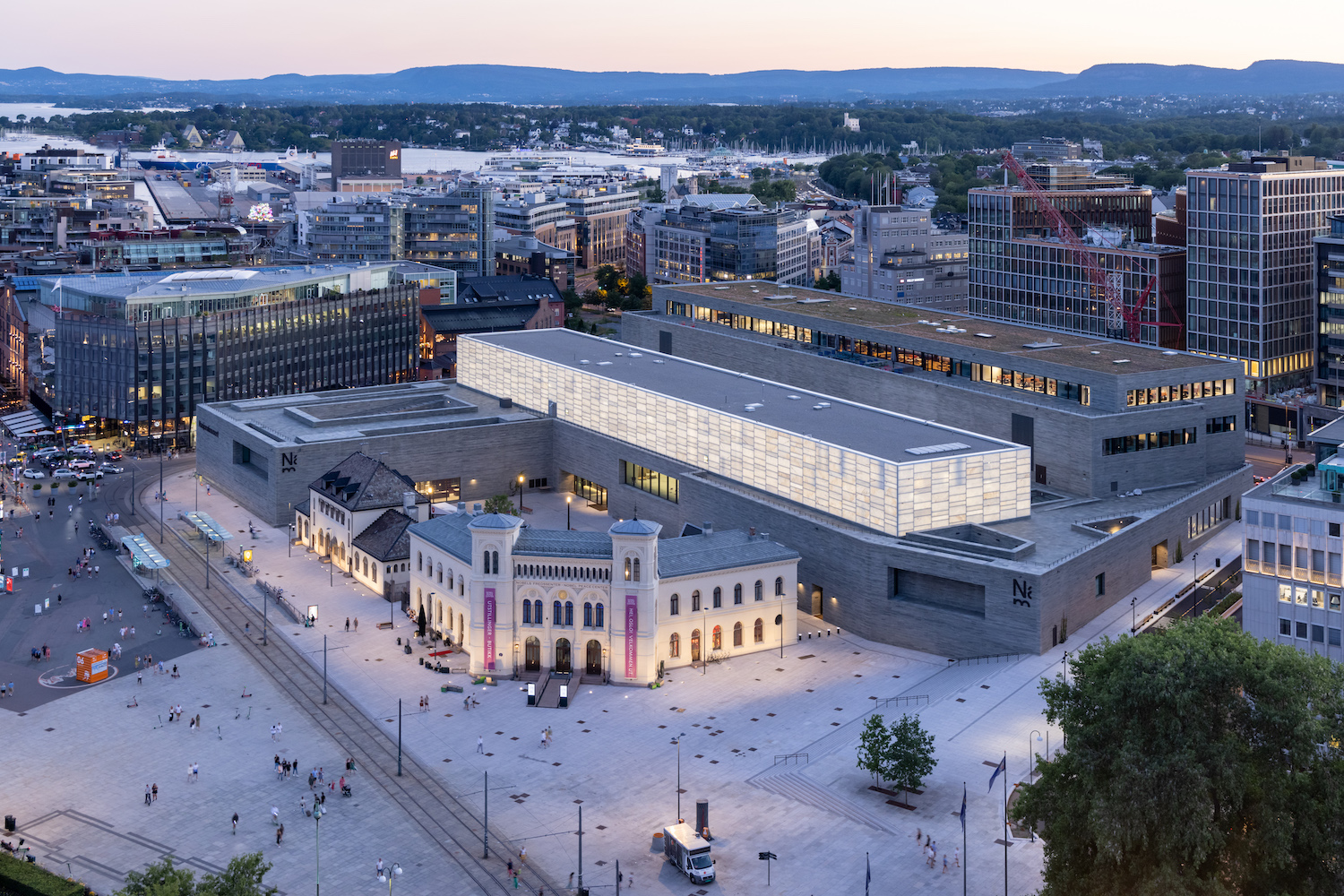
Museum extravaganza
After ten years of planning and six years as a construction site in central Oslo, Norway’s new National Museum threw open its doors in June 2022. ‘The grey box’ has received both praise and criticism. The largest museum in Northern Europe is monumental, elegant and expensive, with marble lavatories and extravagant detailing in dark oak. At a price tag of around 6.1 billion Norwegian kroner, the new National Museum is a major investment for the Norwegian state. The permanent exhibition, ‘The Collection’, consists of six main presentations, with the former Museum of Decorative Arts and Design – which closed back in 2016 in order to prepare for the move – now represented in two collections: ‘Design before 1900’ (Rooms 1–18) and ‘Design and crafts from 1900 to the present’ (Rooms 19–31).
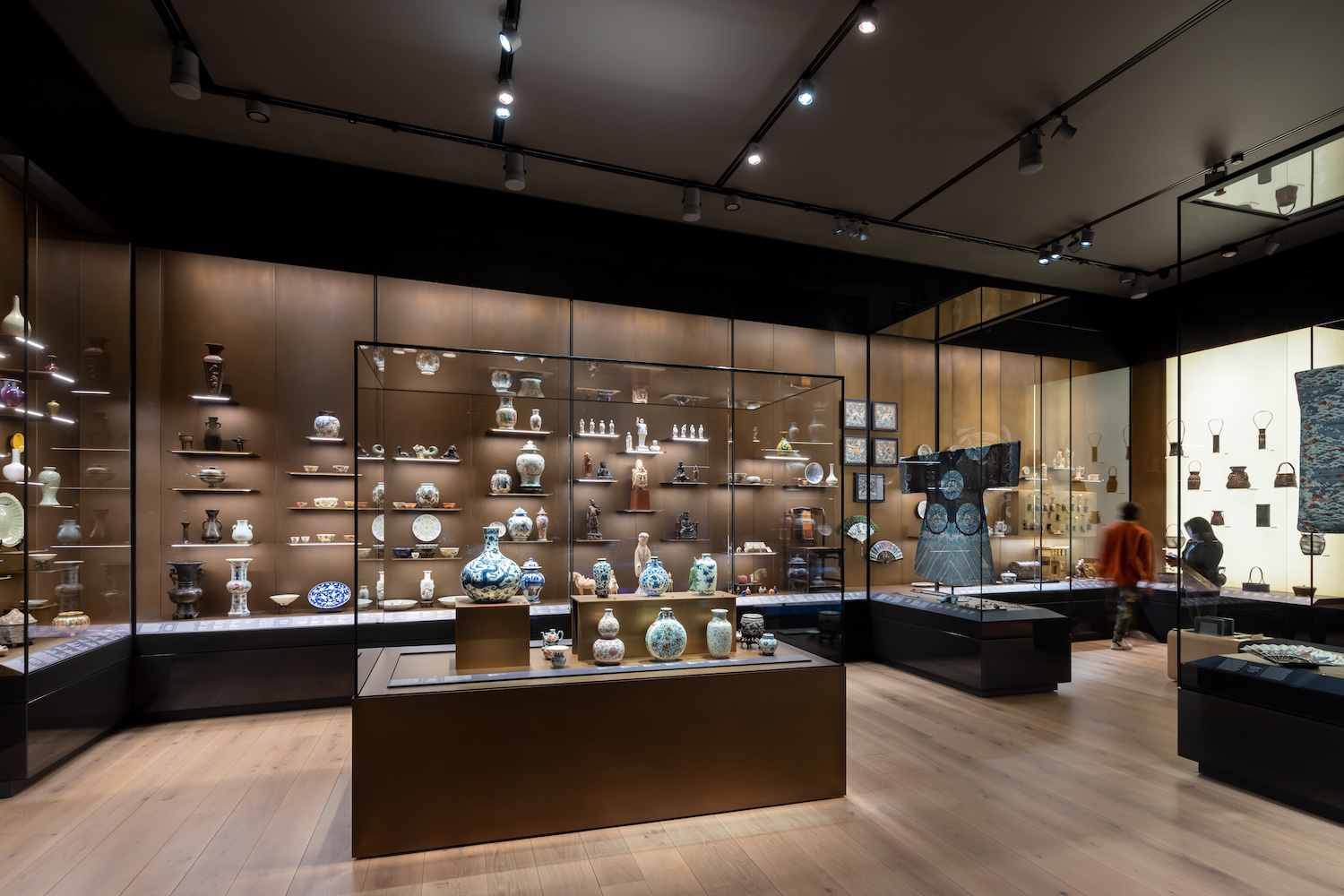
In Oslo, the design exhibitions are chronologically arranged, and the audience is guided through a presentation of Western design history that aims to capture the full scope of the design concept. Visitors encounter a wide variety of object types: Roman jugs of unknown provenance, 18th-century plaster copies, needlework samplers with rococo ornamentation, mass-produced matchboxes, rifles from Norwegian weapons manufacturers, Norway’s election system (service design) and video clips from digital game design. A large number of objects from visual culture serves to contextualize the design exhibits, including photographs, art, advertisements, discursive books on design and posters from design exhibitions. Most of the older objects have long been a part of the collection at the Museum of Decorative Arts and Design, while about one third of the objects in the exhibition from the 20th century are new acquisitions.
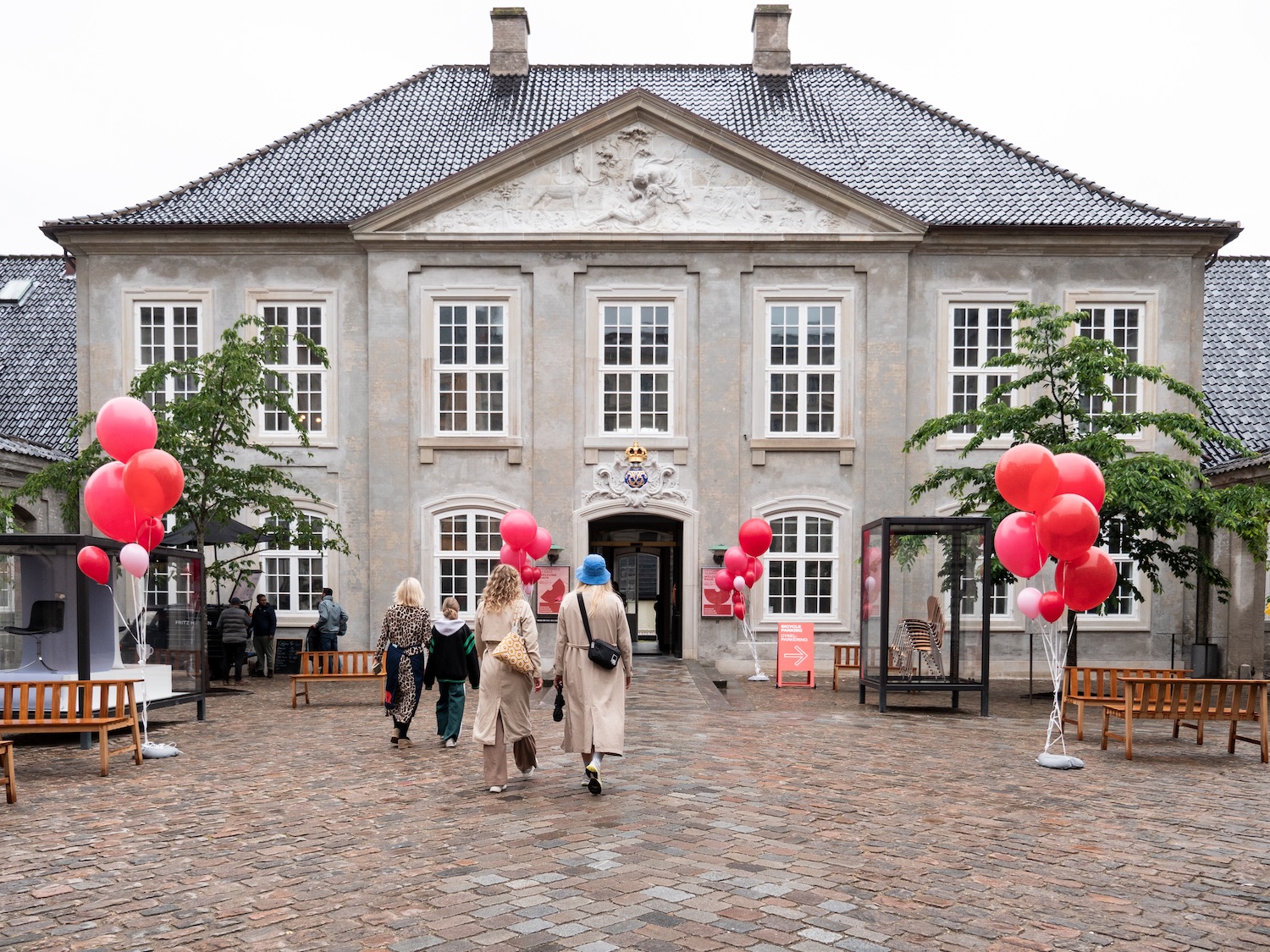
In Copenhagen, a completely transformed museum has now opened after two years of extensive renovations to the rococo building, the former Frederiks Hospital. In Denmark too, visitors follow a pre-defined path through the museum, but while the design exhibitions in Oslo begin with Greco-Roman culture, Designmuseum Danmark begins with the future.
The first item in the exhibition becomes a key object for understanding the museum as a whole. An original wooden museum display case frames a rectangular box made up of screens that present a digital narrative in a cartoon format. This first object both presents and operationalizes the status of the design field today.
Graphic design is used to visualize complex questions about the dual role of the design field as a catalyst of Western mass consumption and a tool for a radical transition to a sustainable circular economy. Similar questions might be raised about the dual role of the design museum in 2022.
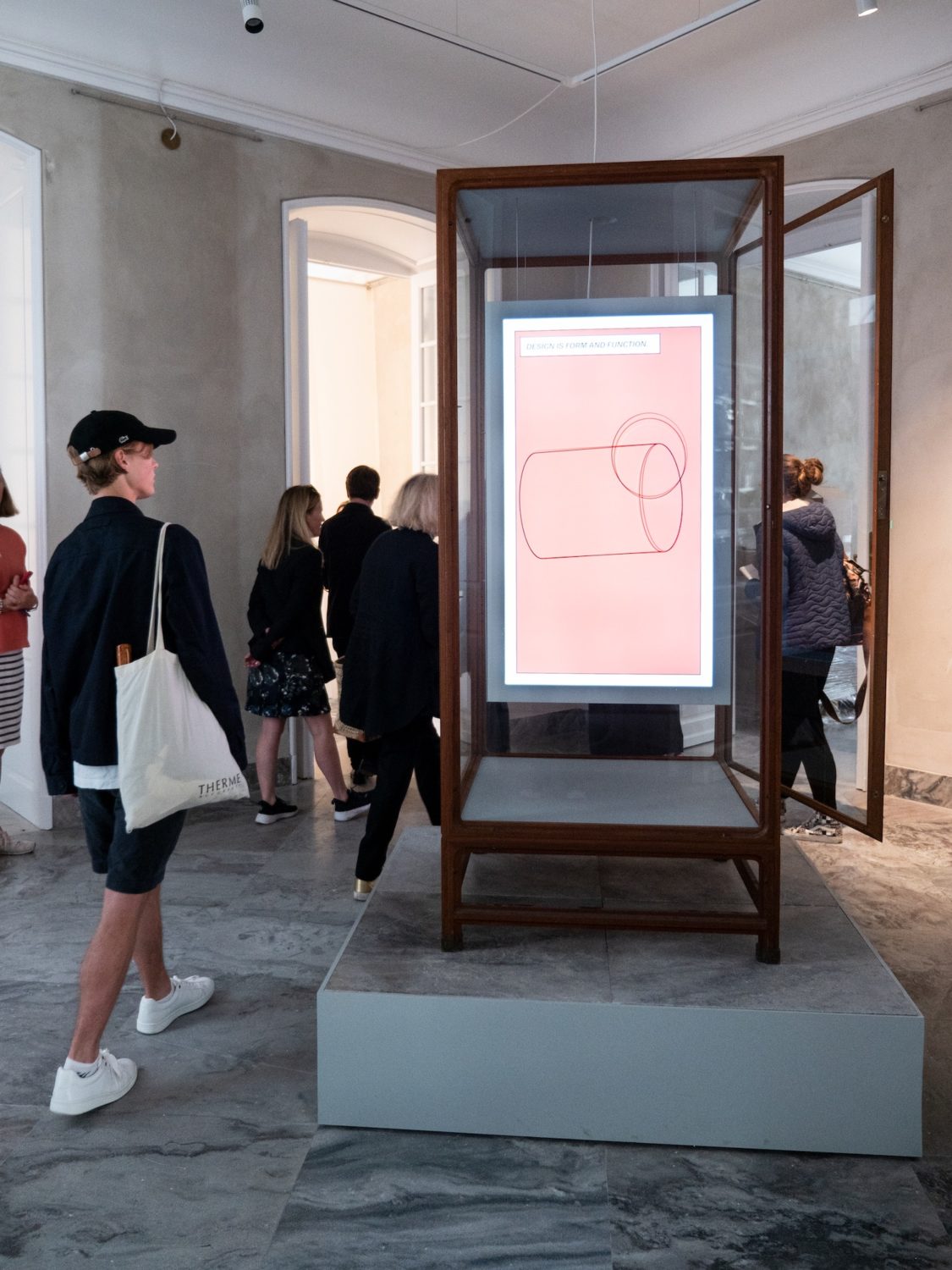
Will a design museum maintain the capitalist drive for consumption, even if the exhibitions advocate radical change? How do the two design museums navigate between the past and the future? How is the relationship between aesthetics and ethics articulated?
A national identity project
The National Museum in Oslo deserves credit for directing a critical gaze at its own role as the nation’s museum of art, architecture and design. The National Museum has chosen a consistent ideological narrative that continues and further develops the postmodern exhibition approach. For the past 30 years, most museums have challenged the uniform concept of culture by rejecting monolithic views of history. The art historical canon has been deconstructed with support from schools of theory such as feminism and postcolonialism.
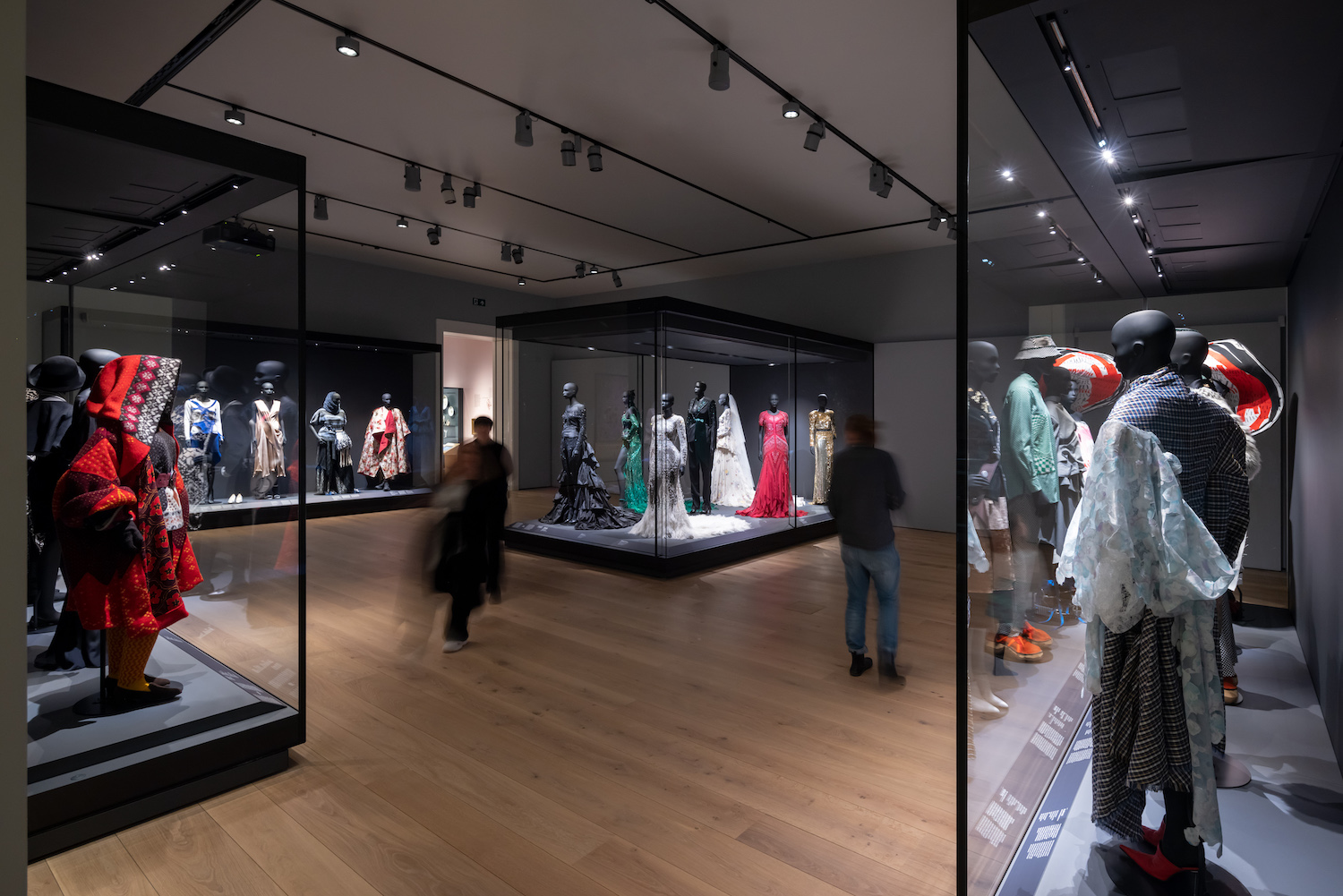
From exhibition texts to the large-scale PR effort (with professional campaigns on Instagram and TikTok), the National Museum repeats its main message: Norwegian art and culture are diverse and in constant dialogue with global trends and impulses. The design exhibitions reflect – and support – the National Museum’s deconstruction of the concept of culture. Design is not understood as the material manifestation of national, regional or local cultures or subcultures. In line with the current ideological climate, the National Museum presents design as an identity marker. National cultures or subcultures are a construction, we are told. At the new National Museum, the widest possible audience should be able to identify with the objects on display. The vision of the National Museum is to make art accessible to all. The museum should be a place for ‘ordinary people’, not for country’s metropolitan cultural elite. At the new museum in Oslo, everyone should be able to shape their own individual cultural identity.
Designmuseum Danmark has chosen a different focus. Even though the museum is well-designed to accommodate both tourists and children, the ideal target group is adults with an educated interest in the topic. In today’s climate of identity politics, this choice feels liberating. Designmuseum Danmark is not driven by an ambition of presenting the full breadth of the design field: while the National Museum in Oslo presents material design, such as graphic design, fashion design, industrial design, and immaterial/digital design, such as systems design, web design and service design – contextualized against a broad backdrop from visual culture – the museum in Copenhagen focuses mainly on material objects of high aesthetic quality. This choice aligns with the original mandate of the museums of crafts and design.
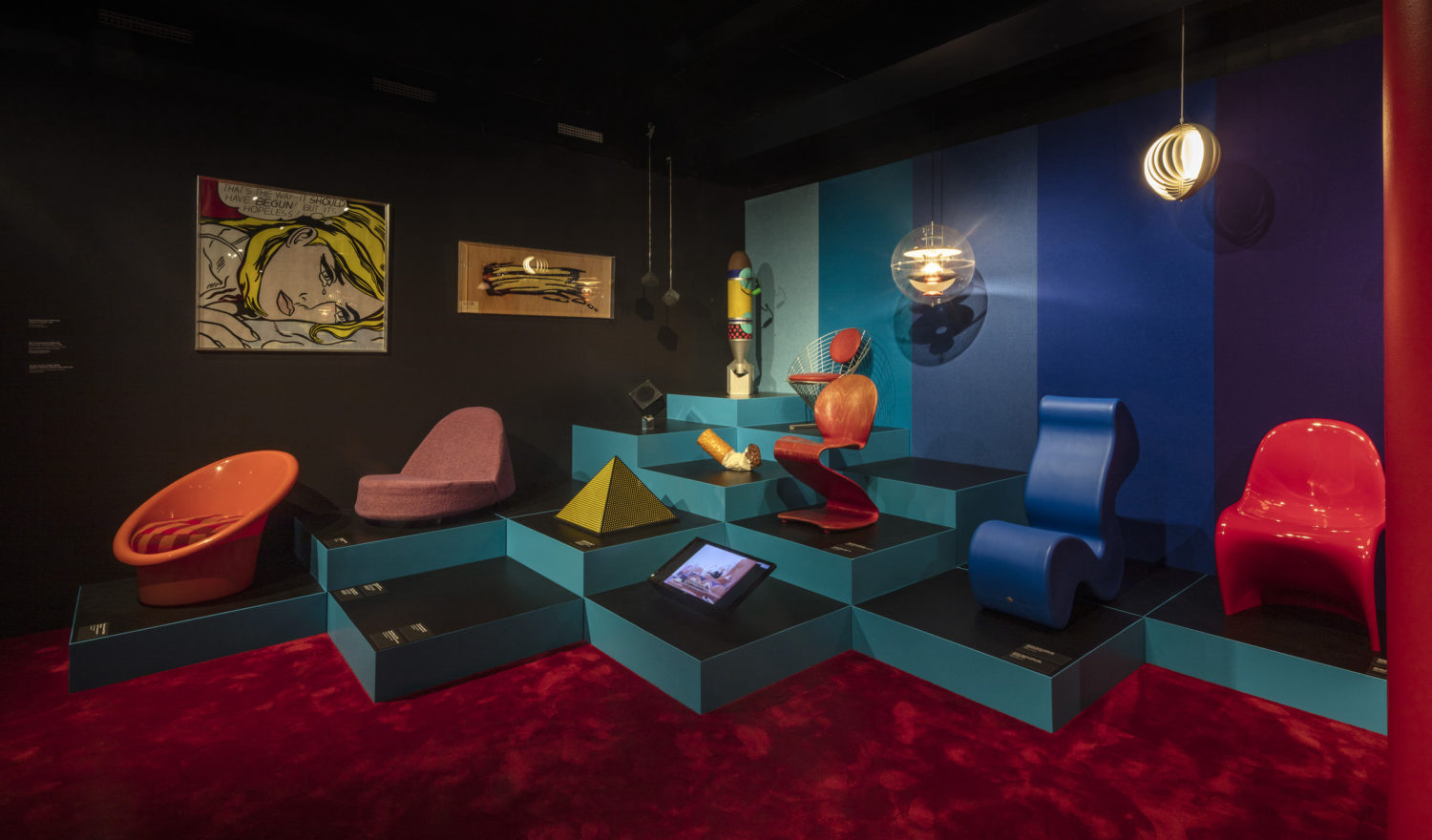
From industry to applied art
Although the two museums differ in perspective, budget and the size of the professional staff, they share the same original purpose. In the late 19th century, no fewer than three museums of crafts and design were established in Norway. In Oslo, the Museum of Decorative Arts and Design collected applied art, decorative arts, design and crafts from 1876. The Danish Museum of Art & Design was founded in 1893, and unlike the national art museums, the founding and collection mandate of these museums of applied art were mainly motivated by economic concerns.
Crafts and applied art were seen as an important aspect of trade and a potentially profitable enterprise. The original mandate of the applied art museums was to display quality craft and industrial products with the main goal of stimulating manufacturers and craftspeople (an audience with an educated interest in the field) to create quality products with aesthetic appeal. The purpose of the exhibitions in applied art museums was to stimulate trade and industry.
The design exhibitions in Oslo incorporate a number of interesting approaches that both acknowledge and highlight the problematic aspects of the historical link between design museum and marketing. The room ‘The new department stores’ is staged to resemble a department store in Kristiania (now Oslo) in the late 19th century. The ‘shop shelves’ feature glassware from Nøstetangen and tableware from the porcelain manufactory Porsgrunds Porselænsfabrik. A full-scale video installation turns one of the walls in the room into a shop window. The video shows the well-dressed citizens of Kristiania gazing with covetous eyes through the shop window – at us and the tangible objects.

The department store room may be seen as a microcosm of a design museum in 2022. In his analysis of the Centre Pompidou, sociologist Jean Baudrillard wrote that the postmodern museum raised the connection between supermarket and museum to a new level. Pompidou was a cultural supermarket for the restless gaze, he wrote, where the postmodern architecture reflected the content. In a design museum, we similarly cast our covetous gaze on temptingly displayed luxury goods. In Oslo, the relationship between design, tourism and value creation is further manifested in the existence of the architecture itself: in 2013, Virke, the Federation of Norwegian Enterprise, published a report which found that a new building for the National Museum would generate 500 million kroner in additional revenue for Oslo city as a result of increased tourism.[1] Even though the relationship between consumption, industry and applied art is thus highlighted as problematic in both Oslo and Copenhagen, it seems difficult to break the link between market and museum.
An ethical museum
Designmuseum Danmark takes several steps to actualize the museum’s potential as a social actor. From the introduction room, visitors are led into a speculative future where designers sell custom-designed services aimed at enriching our lives, such as a perfect dying moment in the scenic landscape of Mols Bjerge. The museum demonstrates how ‘speculative design’ can be used to ask questions about the ethical implications of a fully designed society. As visitors make the square round of the former Frederiks Hospital, they encounter multiple examples of design that shapes the future.
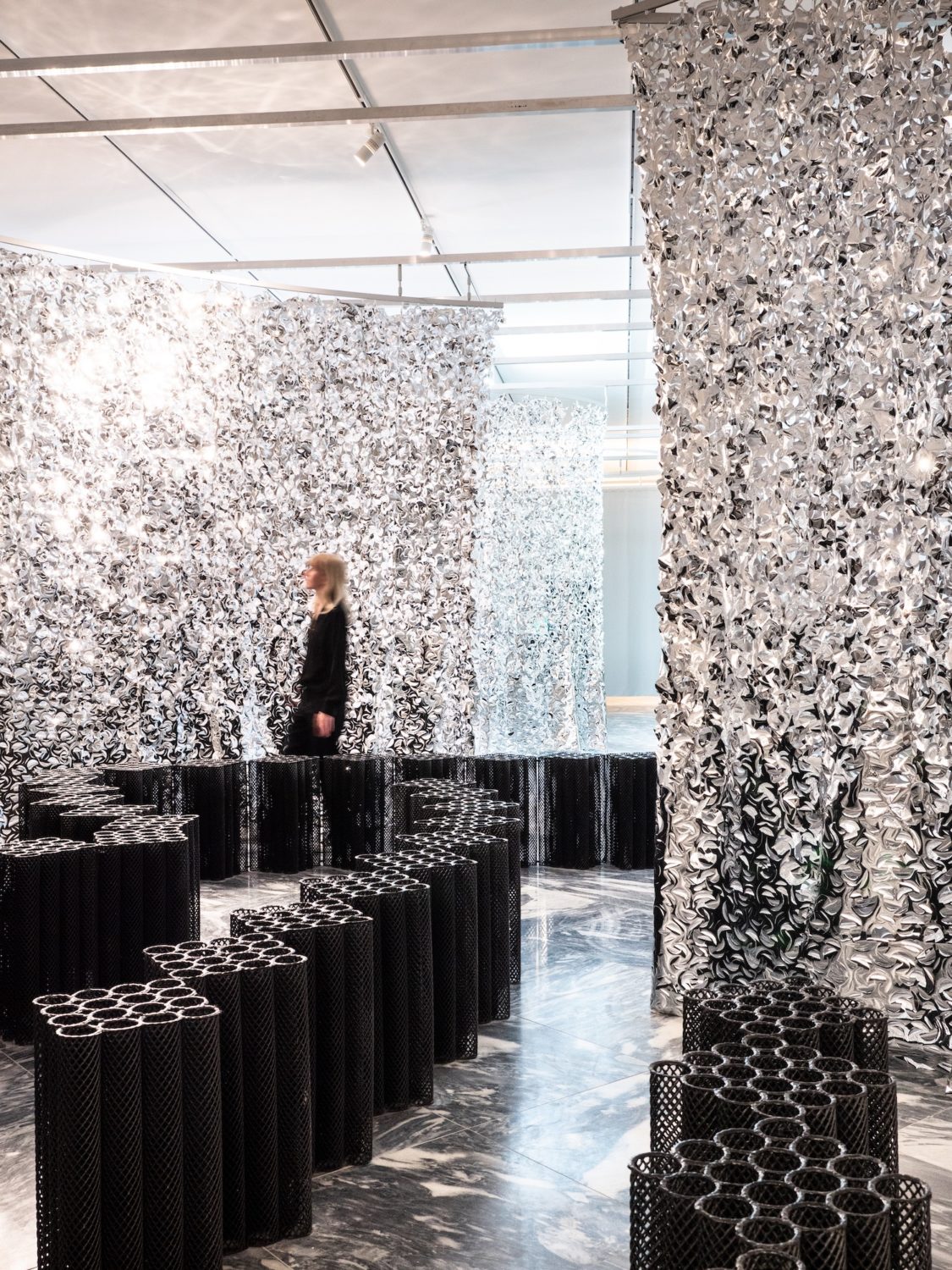
The presentation includes a selection of historical objects with a dual role as both iconic and deeply problematic. One example is the transparent inflatable plastic chair Blow (1969), an iconic disposable object. However, the despite the consistent efforts to highlight the problematic aspects of design, the exhibitions did not seem dystopian or fatalistic.
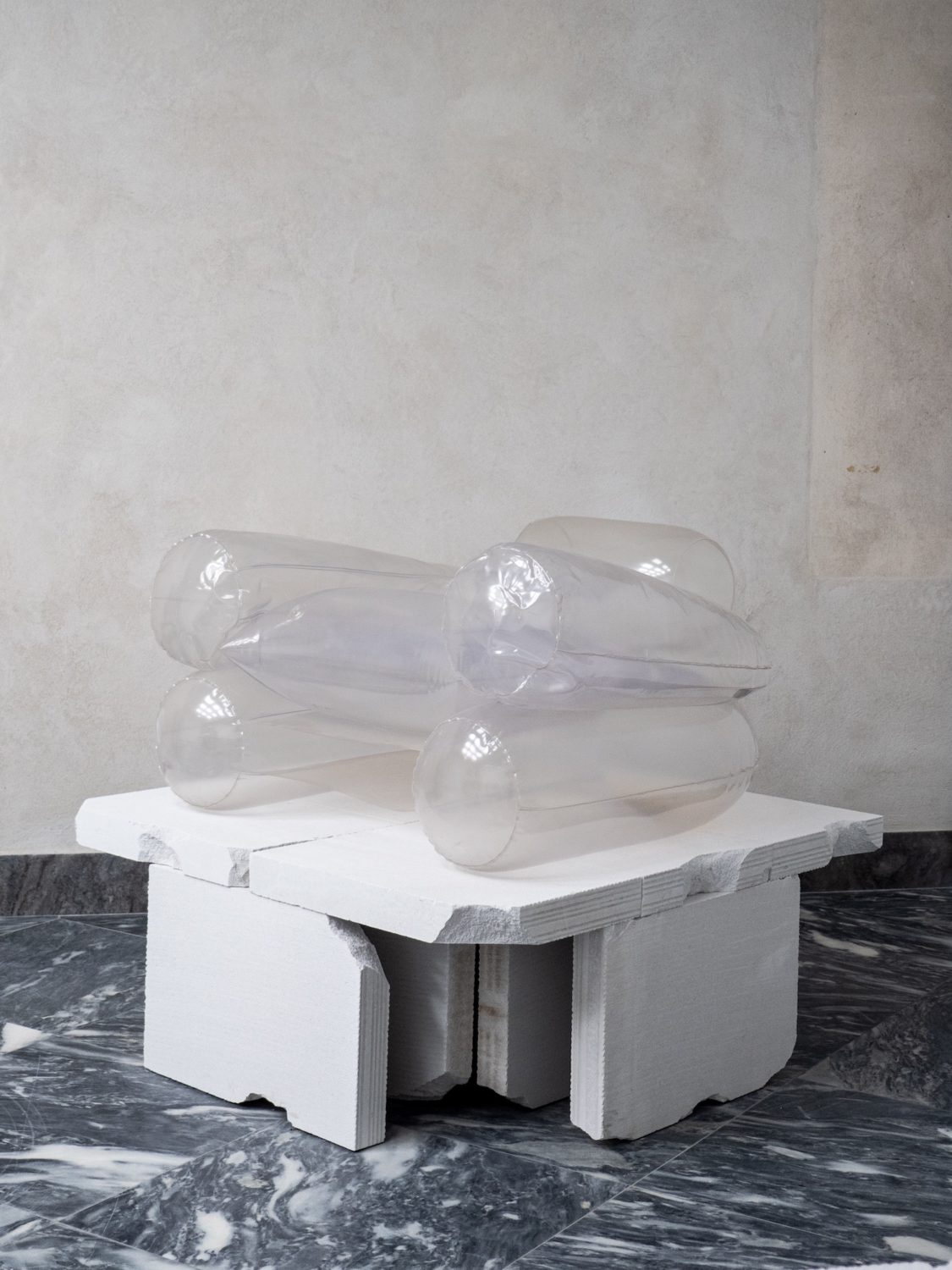
Designmuseum Danmark believes in the ethical potential of aesthetic form. In the book Capitalist Realism: Is There no Alternative? (2009) culture theorist Mark Fisher seeks to redefine the criticism of capitalism. According to Fisher, for this criticism to have a real impact in relation to the climate crisis, it needs to embrace capitalism’s most essential drive: desire. Fisher argues that it is utopian to want for something radically different; we need to start with what we have now and move forward from there. Fisher challenges the notion that capitalism is the only driver associated with desire. We have to rethink aesthetic desire, he argues. We need to demonstrate that aesthetic desire can exist outside the capitalist drive for consumption.
After a focused, innovative and future-oriented round through the former Fredriks Hospital, the final room at Designmuseum Danmark seems anticlimactic. The exhibition ends with uninspiring questions about the boundaries and distinctions between design and art. This undermines the museum’s societal relevance so convincingly demonstrated by the museum curators throughout the transformed museum. However, if we think outside the (museum) box, the museum’s most recent design intervention may be considered the true conclusion and turning point of the exhibitions.
In the museum park Grønnegården, the Danish architecture firm Henning Larsen has created a temporary exhibition pavilion on commission from the museum in collaboration with Fritz Hansen. The pavilion is constructed of Glulam laminated timber, a material that is regarded as one of the most promising construction materials for sustainable architecture.
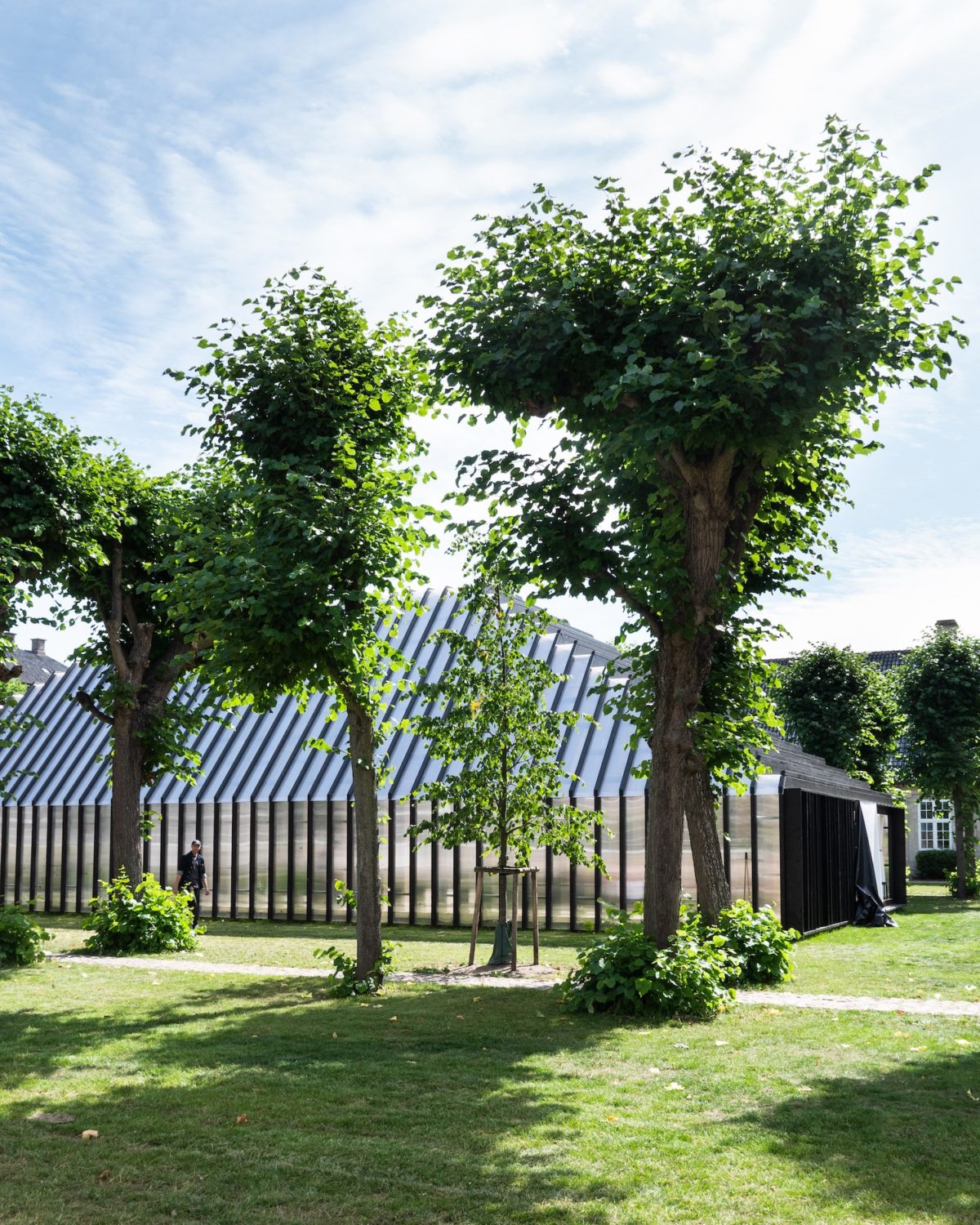
Throughout, the construction process has been based on choices that demonstrate how design can produce appealing design objects based on a circular economy. Both the renovation of the old rococo building and the elegant newbuilt pavilion in the park may be seen as forward-looking strategies for sustainable design. Designmuseum Danmark operationalizes future design strategies – recycling, renovation, circular economy and ethical-aesthetic desire – in its most interesting design object of all: the museum itself.
Design in museums may seem like a contradiction in terms. Design is above all a forward-looking discipline, while museums mainly look to the past. However, a common feature of the design field and museum institutions is that above all, they reflect contemporary ideas about past and future. Another common aspect of the design field and the museum field is that the general audience might not consider either field in a political light. In fact, however, design in museums is a deeply political issue. The new design exhibitions in Oslo and Copenhagen articulate the relationship between aesthetics and politics in two different ways. In Oslo, the design exhibitions reflect the contemporary political climate, while Designmuseum Danmark applies radical – aesthetic – methods in an effort to change both our current time and the future.
Bio
Ingrid Halland (b. 1988) is a Norwegian art historian and art critic with a PhD in 20th-century architecture history. She is associate professor of art history at the University of Bergen, where she teaches 20th-centutry art history, contemporary art and art theory. She also holds the position as associate professor at the Oslo School of Architecture and Design, where she teaches in the PhD programme. Halland is the editor of Metode, a publishing platform of the ROM for art and architecture. She has published research papers in a number of journals, including Log, Journal of Design History, Aggregate and Kunst og kultur. Her book Ung Uro: Unsettling Climates in Nordic Art, Architecture and Design was published in 2021.

Sources
Baudrillard, J (1982). The Beaubourg-effect: Implosion and deterrence. October, 20, 3–13.
Fisher, M. (2009). Capitalist Realism: Is There No Alternative? (pp. V, 81). Zero Books.
Halland, I. (2021). Ung Uro: Unsettling Climates in Nordic Art, Architecture & Design. Cappelen Damm Akademisk.
[1] Virke & Nasjonalmuseet (2013). Ringvirkninger av nytt nasjonalmuseum (Derived effects of a new national museum). https://www.slideshare.net/hildecs/ringvirkninger-av-nytt-nasjonalmuseum-150313 (accessed 17 August 2022).
Thanks to the Norwegian Embassy for support for travel expenses.


